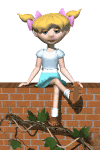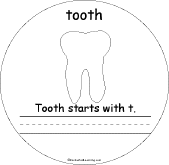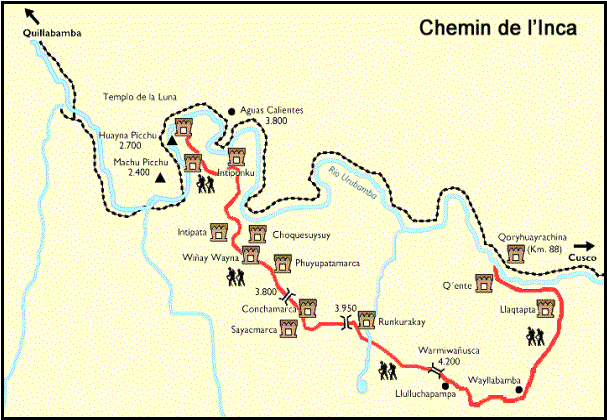FREQUENTLY ASKED QUESTIONS |
 |
Here is where I will post questions which I feel the whole class might benefit from hearing the answer to or add extra information that may come in handy in your teaching.
1. How do I access educational journals like Reading Teacher through the SFU library?
First, you must have an SFU e-mail account with a user name and password. Go to the library webpage (from the Main page, click on My Library, or, www.lib.sfu.ca). Under "Research Tools" click on "Electronic Journals".
Enter "Reading Teacher" in the box and click on "Search".
Click on "Reading Teacher" , then "Academic Search Elite". Find the year you want, the volume and issue.
You can scroll through the articles in each issue. It is possible to copy articles onto your hard drive in either HTML or PDF versions.
2. I'm noticing some new linguistic terminology in the textbooks and would like to know if I am required to memorize the vocabulary.
It's always good to be familiar with the words that keep coming up in the reading but most teachers don't know or use a lot of technical names in the schools. In your Rasinski/Padak book, From Phonics to Fluency, there is a valuable list of the most common definitions (pages 9-12). Pretty soon you will be "fluent" in this scholarly level of reading!
3. Here is an e-mail sent to PDP students on June 29, 2005:
We are here happy to announce that the Taiwan Ministry of Education has released a great opportunity for Qualified English Teachers to join our public school system in Taiwan, ROC for the 2006 academic year.
We consider this opportunity useful for your institution and teachers, as we can place the freshly graduate teachers immediately after their graduation, give them the chance to teach in a different culture and environment, earn enough money to pay their students loans and learn more about Asian culture and traditions.
We are confident that this would be a great opportunity for both your institution and your students and hope we will have a good collaboration in the future.
Here is the
Pay & Benefits Package for your reference:Monthly Salary (Tax free) NT$ 59,115 ($ 1,867 USD/ $ 2,296 CAD)
Housing Subsidy NT$ 5,000/mo ($ 157 USD/ $ 194 CAD)
Airfare Bonus NT$ 30,000 ($ 947 USD/ $ 1,165 CAD)
Performance bonus NT$ 0 to 59,115 ($ 1,867USD/ $ 2,296 CAD)
*All bonuses shall be paid upon completion of one year contract.
- Airport pick up and temporary accommodation for the first days.
- Assistance in finding an apartment and signing the contract with the landlord.
- Assistance in processing the work permit, ARC and NHI cards.(The government will start processing the teachers work permits before flying to Taiwan, will sign the contract and be appointed to the school and guaranteed a job prior to their arrival.)
- Help in opening a bank account, buying a scooter/bike/car.
- Mediating between the government, teachers and the schools.
- On line Teacher Management System (Paycheck, Attendance, Leave, and Advance Records).
Requirements
English Native speakers
BA degree
A Government Recognized Teacher Certificate
According to Administrative divisions, we have listed all positions open at
http://www.iacc.com.tw/jobs.htm .Please feel free to read our web site for more information related to the schools details and the services we provide.
We have also attached a copy of our Teacher's Handbook and a flyer that you can print out and show it to your students and/or teachers.
For more information check our web site at http://www.iacc.com.tw or contact us at
mirela@iacc.com.tw and 886-4-23759800.Thank you for your time and looking forward to hearing back from you.
Mirela Ploesteanu
International Avenue Consulting Company
16F-1, No 499, Chung Ming South Road,
Taichung City, Taiwan R.O.C. 403
Tel: 886-4-23759800
Fax: 886-4-23760222
E-mail: mirela@iacc.com.tw
| 4. What are some of the most
common reading methods?
This is a summary provided by a home schooling website: Four reading methods teaching children Here is an excerpt:
phonics look & say language experience approach context support method ********************************************************************************************* Four main methods used to teach children how to read are explained below. This is a guide only and if you wish to teach your child to read you must work out which methods suit you and your child. You may like to try each one for a few weeks and record the results or you can combine two or more methods together like the 'phonics' and the 'look and say' method. Whichever way you choose be patient, consistent and above all creative. Creativity is very important to keep any child's interest and enthusiasm at all times. Dyslexia is also touched on with a number of helpful links. Opposition may also be experienced from relatives, friends or local school teachers, if you feel that teaching your own child is the right thing, stick to your conviction and you will reap the rewards in due course. Good Luck! Method 1:
a-t i-t o-n i-f b-e m-e n-o w-e i-n h-e c-a-t s-a-t m-a-t f-a-t p-a-t r-a-t c-a-r g-o-d m-e-n f-l-a-t p-l-a-t t-h-a-t s-p-i-t g-r-i-t s-l-i-t
The cat sat on the mat. The hen is in a pen. Suggested books to read are:
Below you will find a handy alphabet table using each letter sound.
Using symbols on top of the following letters will simplify the letter sounds.
Method 2:
the is rat mat the on the
rat is on the mat Method 3:
· The language experience approach is the third method you may like to use. This particular method actually uses your child's own words to help him/her read. Your child may draw a picture of Dad in the car. In that case you would write underneath the drawing; Dad is in the car. · You continue to collect drawings your child makes and write a short sentence underneath each drawing. A picture of a playground would read; We went to the park or playground. A picture of the child's cat could read; The cat sat on the mat. A picture of you walking the dog could read; Mum walks the dog to the park. · When you've collected enough pictures you make them into a book for your child to read again and again. Write underneath the drawing a description your child gives for the drawing. This way your child will remember much better what is written. · First you will write every word and sentence. Slowly your child will begin to trace over the words you have written and finally the child will write the words and sentences all by him/herself. · Some parents use this method as a first approach to reading in order to help their child understand that what they've drawn and what the parent has written is a form of communication between the child and parent. LANGUAGE
EXPERIENCE APPROACH LINKS http://www.sasked.gov.sk.ca/docs/ela/e_literacy/language.html
The language
experience approach supports children's concept development and vocabulary growth while
offering many opportunities for meaningful reading and writing activities
Method 4:
· When your child is just learning to read it is important to choose books that really interest them. If your son likes cars choose a book with pictures and simple words about cars. This will keep his interest and he will enjoy his time learning with you. If your daughter likes dolls, obtain a book with doll pictures and simple words. Again it will encourage your child's enthusiasm because she is actually looking at something she can relate to and likes. · Some books are especially written to support this method of learning. You will find a longer sentence on one side of the page while the other side has a single word or maybe two to three words for your child to read. You will read the longer sentence while your child reads the simpler version. · You may like to try this method of long and
short text or maybe combine it with one of the other methods above. FURTHER
INTERESTING READING LINKS http://www.ncrel.org/sdrs/areas/isbe/isbecon.htm
Exemplary
Reading Programs in Illinois Public Schools. This study examined 10
schools whose students were consistently high achievers in reading/language arts. Every
classroom, every teacher, every program was unique in some respects, yet there were a
number of common features of instruction across study sites that teachers and
administrators felt played an important role in the success of their reading/ language
arts programs. http://www.education-world.com/a_curr/curr029.shtml The debate still rages among educators, parents, and experts. Whole language? Or phonics? Which approach to teaching reading works best? Is the pendulum swinging? |








